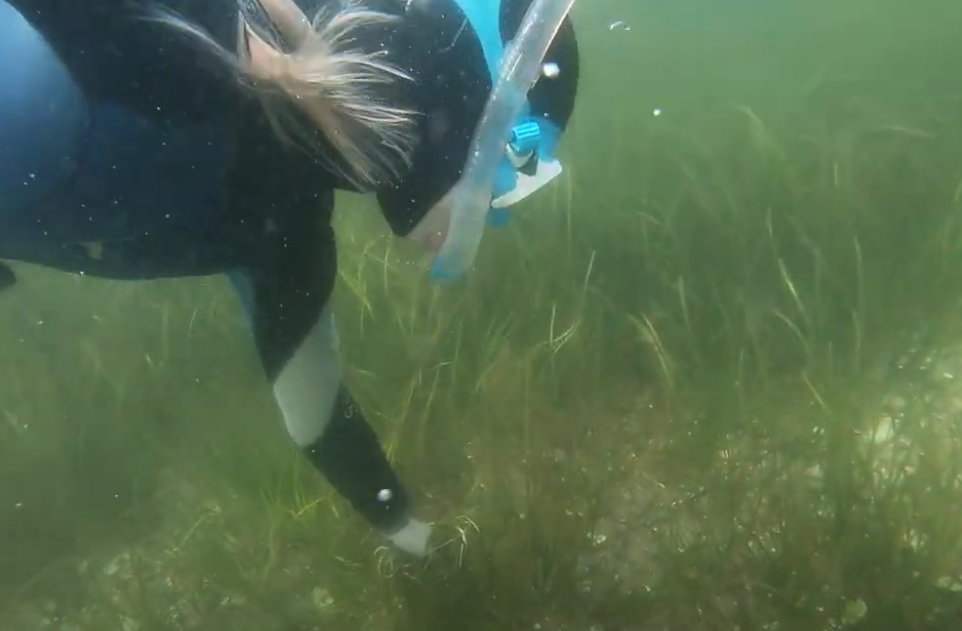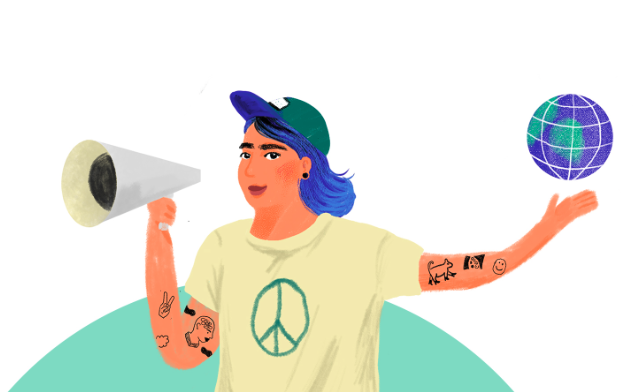Did you know that the world’s largest food delivery service is a purpose company?

Delivery Hero, Amazon Fresh or Just Eat are multi-billion companies. Surprisingly, they are outperformed by an amazing non-profit that delivers 12 billion meals a year.
This article is a tribute to the United Nations World Food Programme, often abbreviated as WFP. The organization was awarded the Nobel Peace Prize last week. This is an important signal especially in times when billions of people particularly in the global South are economically cut off by the global pandemic.
The goal: “Zero hunger” – a world without hunger
The UN World Food Programme (WFP) is one of the leading humanitarian organizations in the fight against global hunger. Like its sister organization, the Food and Agricultural Organization (FAO), the UN sub-organization is based in Rome. While the FAO is primarily concerned with strengthening agriculture in underdeveloped areas by providing technical expertise, the World Food Programme among others is engaged in many emergency relief missions saving lives of the victims of war, crop failure, drought, flooding, earthquakes, storms and other natural disasters. The World Food Programme is particularly active where other aid organizations reach their limits. Two thirds of its programs are implemented in countries affected by conflict, where the likelihood of malnutrition is three times higher than in safe countries.
Complementary WFP programs address the causes of hunger by strengthening the resilience of communities, hence reducing the likelihood of repeated emergency relief operations in these areas.
«Every day, some 5,000 trucks, 20 cargo ships and 92 airplanes are deployed for WFP to provide food and other relief supplies to the most vulnerable.»
The dimensions are enormous. Last year, the World Food Programme provided 4.2 million tons of food and 2.1 billion US dollars in cash and vouchers. Last year, WFP’s food aid provided about 12.6 billion meals. One portion costs an average of US$0.31. Food is procured as close as possible to the point of use – this saves both time and transport costs and strengthens the local economy. Whenever possible, WFP increasingly supports people in need with cash transfers. In this way, people in need can buy food on the spot and be self-determined. The organization is financed by voluntary contributions from the international community, with a smaller proportion coming from donations from companies and private individuals.

WFP Delivers Food to North Darfur IDP Camps.
The World Food Programme (in German: “Welternährungsprogramm”) is not to be confused with the Welthungerhilfe. The Bonn-based organization, whose patron is traditionally the German Federal President, is another major non-profit committed to ensure security across the globe. Other than what its name might suggest, ending hunger means far more to Welthungerhilfe than supplying people with calories. Many of the programs promote rural development and small-scale farming, for example through better access to land, seeds, clean water and sanitary facilities. Welthungerhilfe also spreads entrepreneurial know-how in rural regions and promotes the development of small businesses and cooperatives. This creates prospects and prevents people in many countries from being forced to flee their homes. Some of its programs are funded by the World Food Programme; the organizations work closely together.
School meals for 17 million students
Insufficient – or wrong – nutrition does not only cause suffering and health problems. It also hinders progress in areas such as education and employment. The World Food Programme is therefore particularly concerned with the well-being of mothers and children. The first 1,000 days of a child’s life, from the beginning of pregnancy to its second birthday, are crucial for its further development. WFP promotes healthy food for children during this period and supports them later with school meals. WFP is the world’s largest humanitarian organization implementing school meal programs: in 2019, more than 17.3 million students in 59 countries received nutritious school meals – many of them in remote and inaccessible areas.
GOOD and the World Food Programme
We at GOOD use the revenue from our search engine to support social innovators who contribute to the UN sustainability goals with new, often unconventional ideas. Although at first glance the World Food Programme itself is unlikely to be our target groups, there are surprisingly many linkages to WFP. We already have several projects in our portfolio that form part of a WFP initiative, collaborate with WFP, or benefit from its work. For example:
ShareTheMeal: ShareTheMeal is a smartphone app that allows people to share their meal with a hungry child – via a small donation of $0.30.
Sanku – Project Healthy Children: Sanku helps local mills in Africa to fortify flour with essential vitamins and minerals – at no extra cost.
Conflict Food: The Berlin-based start-up helps people in crisis regions by purchasing agricultural products from these regions that are typically produced in the country. Directly from small farmers, without middlemen.

ShareTheMeal is the first app against global Hunger.
With the founding of the WFP Innovation Accelerator 2015 in Munich, the World Food Programme has its own in-house accelerator to boost new ideas to end hunger and malnutrition. The Innovation Accelerator provides WFP employees, entrepreneurs and startups with funding, hands-on support and access to WFP’s global operations. Many of the projects focus on digital innovation such as mobile technology, artificial intelligence, big data and blockchain – and new business models to transform the way we serve vulnerable communities across the world. Examples from the WFP Innovation Accelerator are:
“PLUS Schulessen”: A cloud-based software for schools and the public sector to better plan school meal programs.
H2 Grow: Use of hydroponics to enable food cultivation under extremely difficult conditions.
Building Blocks: Use of Blockchain technology to enable vouchers to purchase food without the use of money.
The World Food Programme is not the only UN organization that has deliberately created a unit that promotes social innovation, thereby helping the large, sometimes cumbersome organizations with their governance structure to gain new momentum. A pool of exciting new approaches can also be found, for example, at UNICEF’s Office for Innovation, here with a view to strengthening the future prospects of children and young people.
We congratulate WFP on the Nobel Peace Prize and look forward to supporting an increasing number of projects in their context in the future!
Sources:
https://www.welthungerhilfe.de
You have questions or suggestions? Write us!
Dr. Andreas Renner, Co-Founder GOOD: andreas@good-search.org
Werde Teil einer Community, die die Welt positiv verändert!
Setze ein Zeichen und mache Gexsi zu deiner Standardsuche!
![]() Gexsi – Die Suchmaschine für eine bessere Welt
Gexsi – Die Suchmaschine für eine bessere Welt
Deine Suchanfragen generieren Geld für Projekte, die die Welt positiv verändern.

